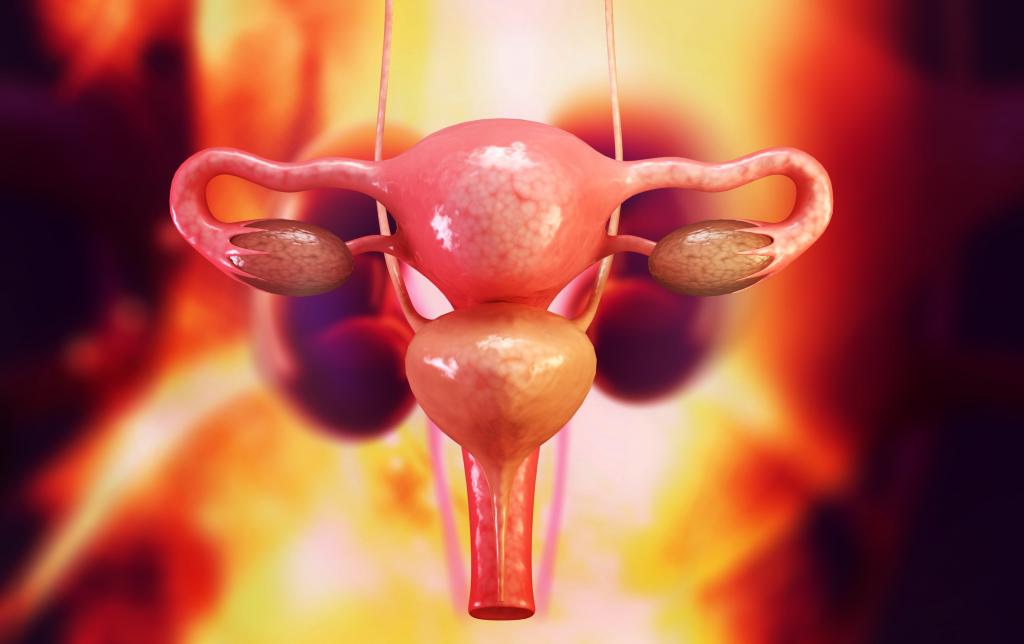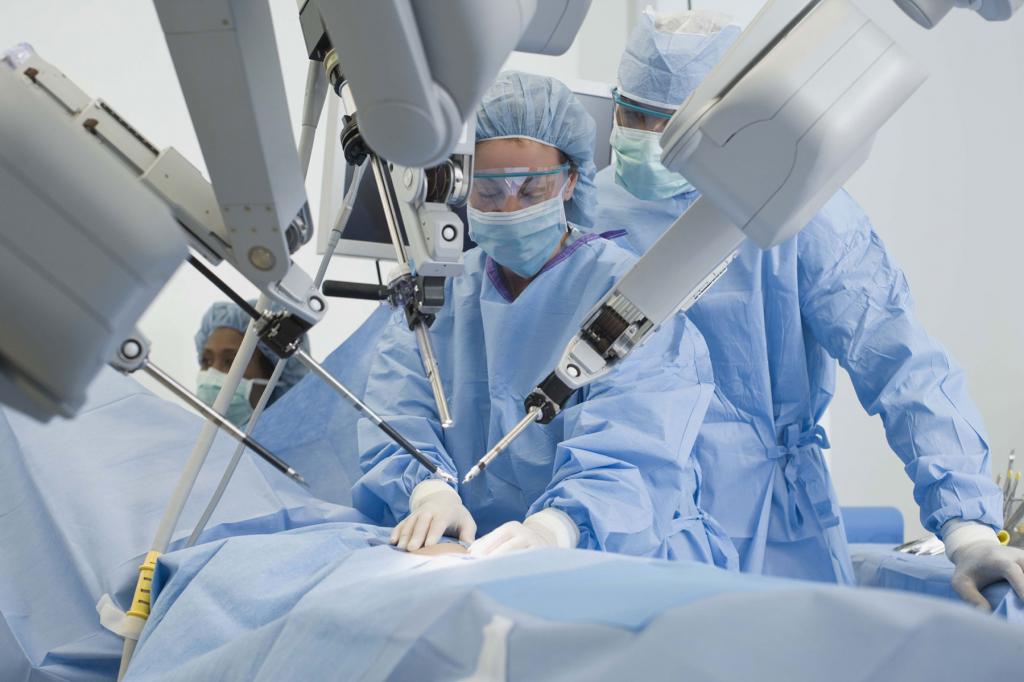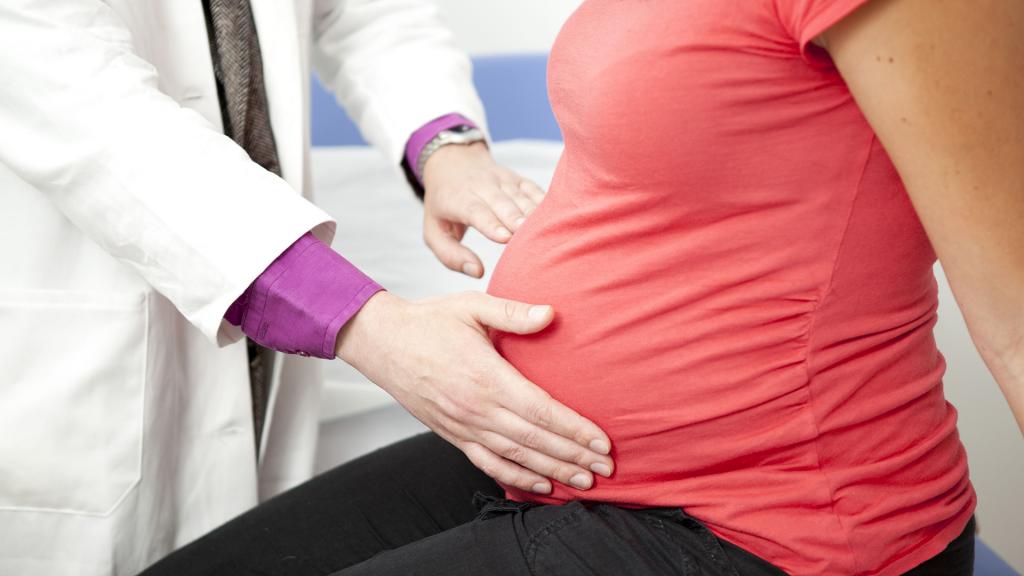Uterine fibroids (fibroma, fibromyoma, leiomyoma) - a benign formation that develops from the uterine myometrium (muscle layer). A very common pathology, 10-27% of women turn to gynecologists precisely about it. It is considered a hormone-dependent tumor. It occurs mainly in reproductive age, with a peak incidence of 35-40 years. It not only affects the well-being of the patient, but affects mainly the reproductive function itself. Today, pathology is often found at a younger age, becoming the cause of infertility.
The size of uterine fibroids is estimated in weeks, since it corresponds to the growth of the uterus during pregnancy. Half of the patients receive surgical treatment as the most effective for myoma. Previously, the treatment of any uterine fibroids was reduced to the complete removal of the organ. Today, conservative myomectomy is often performed, in which the reproductive function is fully preserved.
Causes of Myomas

The causes of neoplasms include the following:
- hereditary predisposition;
- myometrial bookmark defect in embryogenesis;
- a large number of abortions;
- menstrual irregularities (MC);
- curettage of the uterus for diagnostic purposes;
- birth injury to the mother;
- some endocrinopathies (diabetes, obesity), hypothyroidism;
- absence of pregnancies up to 30 years;
- early menarche;
- disharmony of sexual relations;
- lack of exercise.
However, hormonal disorders remain the main cause and trigger.
Types of fibroids

Myoma can exist in the form of a single formation or be multiple, grow in the form of a node or have a diffuse origin, have a leg or a wide base, be in the uterus or cervix, be simple, proliferating, pre-sarcoma.
According to the location of the fibroid, it can be:
- Interstitial or intramural - located in the middle of the myometrium.
- Subserous fibroids - grows under the upper membrane of the uterus and is usually directed into the abdominal cavity.
- Submucous - localized under the mucosa, and its growth is directed to the uterine cavity.
- Intraligamentous uterine fibroids - such localization is rare, the tumor grows from the uterus to the outside, penetrating between special anatomical formations - ligaments.
Complications
Fibromyoma is not at all as harmless as it seems, despite its good quality. It almost always leads to complications:
- miscarriage, malnutrition of the fetus and its hypoxia;
- infertility;
- after childbirth, decreased uterine tone, bleeding on this soil;
- anemia due to profuse uterine bleeding;
- rebirth into sarcoma;
- with physical overstrain and large myomas, the leg can twist;
- malnutrition;
- accelerated education growth;
- endometrial hyperplasia;
- the development of hydronephrosis or pyelonephritis.
What to do when fibroids appear
Treatment of fibroids depends on the size of the node, the age of the woman and her desire to have offspring in the future. If the tumor is small, does not tend to grow, the woman is not going to give birth, treatment with HRT - hormone replacement therapy will be appropriate. Hormonal preparations, if properly selected, can not only slow down, but also stop the growth of education. Courses are usually assigned several in a row.
So, indications for hormone treatment:
- the value of fibroids should not exceed 12 weeks;
- intramural and subserous myoma;
- no pain and bleeding;
- the impossibility of surgery due to contraindications.
Surgery

Surgical treatment with the removal of fibroids is carried out with its large sizes or complications.
What is gynecology - uterine myoma? This is the excision of myomatous neoplasms from the organ cavity. Today conservative myomectomy is used, which is considered an organ-preserving operation.
Myoma nodes are removed with it, but the uterus is not. This is true in the case of planning pregnancy and maintaining menstrual function.
After myomectomy, every second woman can expect a pregnancy. Therefore, reviews of conservative myomectomy are always positive. According to some reports, the restoration of reproduction in such women reaches even 69%.
Myomectomy versus cycle day
The operation is most often done from 6 to 18 days of the cycle. However, in the absence of gestation, it does not matter on which day the MC performs myomectomy.
Another thing when it comes to pregnant: the optimal period is 14-19 weeks of pregnancy. By this time, the placenta is already fully working, the organs are laid, and in the peripheral blood of the expectant mother, progesterone doubles. Why is progesterone important? It increases and supports the obturative function of the internal uterus and reduces the risk of premature birth. This function is protective in nature.
Contraindications for surgery
Contraindications include:
- Presence of precancerous or already cancerous formations in the neck or endometrium.
- Suspicion of malignancy.
- Diagnosis of fibroids and adenomyosis at the same time.
- Pathology of the respiratory system and the heart system.
- The size of myomatous nodes is more than 15-20 cm, even after preliminary HRT.
- Multiple myoma with a node size of up to 5-6 cm.
Relative contraindications
They can be corrected medically:
- Diabetes mellitus with severe hyperglycemia.
- Obesity.
- Infectious-purulent processes of the uterus and appendages.
- Severe iron deficiency anemia.
Indications for non-pregnant
It is advisable to carry out the operation to patients of childbearing age and nulliparous, as well as when:
- growth of a node in the uterine cavity;
- the presence of legs in fibroids;
- acyclic bleeding or prolonged and heavy periods, leading to anemia;
- infertility
- with the size of the fibroids more than 12 weeks, even with the absence of complaints, since at the same time the adjacent organs are still violated;
- signs of compression of adjacent organs;
- atypical location of the node - it can grow in the cervix or isthmus, in the ligaments of the uterus;
- fibroid necrosis;
- double fibroid growth in 1 year.
In the case of multiple fibroids, it is advisable to conduct an EMA first. This leads to the elimination of small nodes, and large ones decrease and become clearly visible during surgery.
The main indications of myomectomy during pregnancy

Surgery during pregnancy is indicated in the following cases:
- Necrosis of fibroids as a result of torsion of the leg.
- Compression of organs due to growth of the neoplasm.
Preoperative preparation
It is no different from that in other types of operations. A completely standard set of studies includes:
- blood and urine tests;
- chest x-ray;
- ECG;
- Ultrasound
- swab from the vagina;
- examination of the rectum.
Advantages and disadvantages of conservative myomectomy

Benefits:
- the tumor is removed simultaneously and the uterus is preserved;
- the operation technique is well known to most practicing gynecologists.
Minuses:
- probability of relapse - according to statistics, this is observed in 70% of cases;
- the possibility of complications.
- after laparotomic access, a uterine scar will take place, which requires a cesarean section during childbirth in the future;
- technical complexity in multiple myomas.
Operation Prices
They vary slightly, but on average the procedure costs from 25 to 120 thousand rubles. The most expensive EMA operation is from 100 to 200 thousand rubles.
The cost depends on the amount of intervention and type of access. It includes the cost of operating materials, medicines, dressings. In many clinics, hospital stay and food are added here.
The main types are:
- myomectomy;
- embolization
- radical hysterectomy.
Myomectomy
It is carried out in several ways:
- abdominal (laparotomy myomectomy);
- hysteroscopic;
- laparoscopic.
Important points are the formation of a full-fledged (wealthy) scar on the uterus and, if possible, the maximum prevention of adhesions, the choice of the optimal location for the incision on the uterus, the correct husking of the myoma node after opening its capsule. It is important to stop bleeding without the use of diathermocoagulation (optimally - by squeezing the tissues of the vessels).
If the uterus is incised, to stitch it, the sutures are laid in 3 rows using vicryl threads. They are remarkable in that they do not tear away and dissolve themselves for a long time.
They try to cut the capsule along its upper pole so as not to damage large vessels. In addition, such a section will simultaneously remove other nodes if they exist.
To reduce the degree of adhesions, at the end of surgery, the pelvic space is thoroughly drained, and anti-adhesion solutions are introduced into it. At the same time, at least a liter of such a solution can take up one operation.
Pregnancy myomectomy
The technique of the operation is no different, the features are to take into account the presence of the fetus in the uterus. This is due not only to the presence of the fetus, but also to an enlarged uterus and its plentiful blood supply. Therefore, the task is to prevent bleeding, trauma to the embryo and sepsis after surgery.
Access is through a midline incision in the lower abdominal wall, after which the surgeon's assistant removes the uterus and fetus into the wound and holds it. This reduces the risk of large blood loss. In a pregnant uterus, only dominant nodes are husked, which prevent the fetus from growing and compress other organs.
Reviews of abdominal myomectomy during pregnancy show the success of the method used, followed by the normal course of pregnancy. Childbirth after myomectomy with the same pregnancy is carried out only by cesarean section.
Abdominal myomectomy
The method is also called laparotomy - this is an abdominal operation. Today it is used infrequently. It is justified only in the case of a severely deformed uterus due to multiple nodes or their large size.
A small incision is made in the suprapubic zone of the abdomen, and the neoplasm is neatly peeled from the uterine cavity. Anesthesia is common. The postoperative period in this case is the most difficult and longest - 2-3 weeks. Plus, manipulations are in controlling the progress of the operation directly by the surgeon. Patients in their reviews of abdominal myomectomy surgery speak of a possible pregnancy 6-18 months after the intervention.
Laparoscopic myomectomy
Laparoscopic myomectomy allows all the necessary manipulations to be performed by small 3-4 punctures in the anterior abdominal wall, after which there is practically no scarring. In place of the cuts, tiny scars remain in the form of dots. The progress of the operation is monitored through a monitor.
It has clear advantages over laparotomy. The postoperative period is shorter than with laparotomy - only 2 weeks. In addition, laparoscopy practically does not give such complications as infection, bleeding, etc., since there is no incision on the uterus, there is no scar, there is a big chance to give birth to a child herself.
Laparoscopic myomectomy reviews are mostly positive. The patient can be discharged home already 2-3 days after endoscopic intervention.
Limitations for laparoscopy:
- myomatous node with a size exceeding 9 weeks;
- a node in a remote place;
- there should be no pronounced adhesions;
- obesity 2 degrees;
- multiple fibroids.
Hysteroscopic myomectomy

This is the removal of myomatous nodes from the uterine cavity through its neck and vagina, i.e. transvaginally, without incisions. Another name is transcervical removal.
The expansion of the cervix is carried out by a hysteroscope. Naturally, the method is applicable for small sizes of nodes and their submucous arrangement. Scars on the uterus and skin do not occur, which is important for women planning a pregnancy and natural birth.
A hysteroscopic myomectomy or hysteroresectoscopic is performed on an outpatient basis, often under local anesthesia. It is carried out mechanically or electrosurgically.
Indications:
- submucous nodes on the leg less than 10 cm;
- submucosal fibroids under the condition of preliminary EMA.
The procedure has positive reviews. Many women like hysteroscopic myomectomy due to its good tolerance and a small amount of time - only 15-20 minutes. Another plus is that after a couple of hours the patient goes home.
Hysteroscopic myomectomy deserves a positive review also because complications with this method are extremely rare, pregnancy can be planned already in the first six months and hope for its successful course.
FUS-ablation of uterine fibroids
A relatively new method of treating uterine fibroids. Its essence lies in the fact that fibroids are exposed to focused ultrasonic waves. Hence the name FUZ - focused ultrasound. It is carried out under the control of MRI, without anesthesia. With the help of such ablation, a decrease in the size of the neoplasm occurs without surgical intervention. Contraindications: a woman’s desire to become pregnant in the future, more than 5 myomatous nodes in the uterus.
Feedback on myomectomy surgery in this way is positive. Although the procedure itself can last about 6 hours.
Hysterectomy

Complete removal of the uterus is an extreme treatment. It is prescribed for large fibroids, multiple, with severe complications. Removal of the uterus is possible by any of the above accesses - laparotomy, laparoscopy, hysteroscopy.
Removing the uterus, its appendages are still trying to save. For what? The reproductive function will not work, but the production of estrogen will continue, and the surgical menopause will not occur.
This operation has its advantages:
- getting rid of possible uterine bleeding for various reasons;
- no risk of recurrence of fibroids;
- there will be no endometrial cancer;
- no need to be protected.
Uterine Artery Embolization (EMA)
Embolization of the uterine arteries is a minimally invasive operation, in which the blood supply to the fibroids is stopped. Its essence is that a catheter is inserted through a puncture of the femoral artery, through which sclerosing special substances are introduced into the vessels supplying the tumor.
As a result, the arteries become clogged and blood flow in them does not occur. Myoma cells cease to receive food and gradually die. In their place, connective tissue grows. In the future, it resolves.
Important aspects
Hysteroscopic surgery is an outpatient procedure. Laparoscopy allows the patient to discharge within 1-3 days. With laparotomy, the patient is in the department for 7-10 days.
Pain after myomectomy, or rather, discomfort in the lower abdomen occurs during the first 3-4 days in the form of pulling pains in the lower abdomen after surgery. They are easily stopped by conventional analgesics. After hysteroscopic surgery, they are not required at all.
After myomectomy, spotting may occur during the first days. Sometimes they can last after a myomectomy for up to a month. In the first 2 days they are plentiful. Gradually become scarce, transparent and cease. Otherwise, this will indicate complications.
The menstrual cycle is usually restored without difficulty, with the expectation that the trading day is considered the first day of the previous cycle. With myomectomy, menstruation is restored quite quickly: conception is not ruled out already in the first month after the operation.
But this is extremely undesirable, so doctors recommend the use of contraceptives in the first 4-5 months. Sutures are removed on the 7-10th day.
Rehabilitation period
After myomectomy, recovery is determined by the correctness of the selected treatment, the volume of the operation, the presence of complications, the age of the woman, and concomitant pathologies.
Prescribed drugs that contribute to the fight against anemia, anticoagulants and drugs that improve blood microcirculation in the tissues. In addition, it is highly recommended to wear elastic compression underwear of the lower extremities to exclude thrombosis that may occur during the rehabilitation period.
All this together will not only restore the myometrium and endometrium, but will also help in the formation of a full scar on the uterus, which is extremely important for women of childbearing age.
To prevent secondary infection of the scar and wound, the doctor must prescribe antibacterial therapy with broad-spectrum antibiotics.
Laparoscopic myomectomy reviews in most cases are positive. With this method of intervention, the next day a woman gets up and walks.
With laparotomy myomectomies, this is possible for 4-5 days. But in any case, they are required: within 3 months after the intervention, heavy physical exertion should be avoided, a postoperative bandage should be worn and try to prevent constipation.
Postoperative treatment
After myomectomy, treatment is always continued with hormones (HRT). It lasts several months and includes the use of hormones such as Buserelin, Mifepristone, etc.
During the rehabilitation period after myomectomy for 5-7 days, and then after 2 months and six months, the passage of ultrasound is recommended. It will help assess the condition of the scar on the uterus and the presence of relapse. It must be remembered that until a conclusion on a fully formed scar is given, pregnancy is excluded.
For women who prefer expectant management when they find fibroids, hoping that when menopause occurs, the fibroids resolve itself (this opinion is very common), it is worth considering that passivity in this matter is dangerous.
Myoma is always a risk factor, and no one can predict its behavior. Such tactics often lead later to the need to remove the uterus. If you are going to give birth and have children, you need to do a myomectomy no later than 3 years after the diagnosis is made.
Possible complications after myomectomy
The following complications are possible:
- Bleeding. To reduce its risk, a course of hormone therapy, EMA, temporary disconnection of some arteries during surgery is used before surgery.
- Menstrual irregularities. Operation is a powerful stress for the body, and hormonal failure is a common response of the body. But in the absence of complications, menstruation is restored after a month, a maximum - after 3. Otherwise, the cause must be found out by the doctor.
- Infection - to avoid it, the postoperative suture must be looked after very carefully, to prevent the slightest contamination.
- Divergence of seams. The cause may be improper application or improper care. To help in such cases, the wound is washed actively with antiseptics and antibiotic treatment is carried out. In extreme cases, a second operation may be required.
- Adhesion is a common occurrence after abdominal surgery. It manifests itself by pulling pain in the lower abdomen and in its lateral departments. With pronounced adhesions in the fallopian tubes, an ectopic pregnancy can occur, followed by infertility. Then shown IVF.
- Relapses of fibroids. Statistics and reviews of uterine fibroids myomectomy indicate that surgery is not a panacea. With single nodes, relapse is possible in every fifth patient, with multiple - in every second. They can occur even after 5-10 years. Practicing doctors advise therefore not to postpone conception for years, but to plan a pregnancy 6-12 months after surgery.
Restrictions after myomectomy at home
The following rules should be followed after surgery:
- No sexual intercourse for 1.5 months.
- Do not lift weights, in extreme cases - no more than 3 kg.
- No training or physical work.
- Not recommended sports, visiting the solarium, saunas, baths, pool for 2 months.
- For menstruation (especially after hysteroscopic myomectomy) do not use tampons.
Important points after surgery
The following activities are recommended:
- A supporting bandage is required for a month for sure.
- Eating without heavy foods and fermentative foods.
- Wearing only natural underwear.
- Wash only in the shower, no bathtubs.
- Use products for intimate hygiene.
When can I plan and give birth after myomectomy?
You can plan a pregnancy and give birth after any type of myomectomy operation not earlier than after 4 months, and even better after six months. This is enough time for which the scar on the uterus will be so prolonged that a woman will be able to completely endure a child and give birth without complications.
It's important to know
An early pregnancy with an unsuccessful scar can lead to very serious complications during childbirth, up to rupture of the uterus with massive bleeding. You shouldn't count on chance. Natural birth after myomectomy is possible only after the formation of a wealthy scar on the uterus, which will be discussed on an ultrasound scan or as a result of the removal of fibroids by a transvaginal route.
In other situations, caesarean section is shown in a planned manner. Women leave different reviews about myomectomy. Practitioners often recommend surgical delivery to eliminate risk. Such tactics are justified, because there is always a risk.
Prevention of uterine fibroids
In order to prevent, the following measures should be taken:
- A regular visit to the gynecologist twice a year.
- Ultrasound of the pelvic organs 1 time per year.
- Regular sex life.
- Elimination of abortion by any available means.
- The use of hormone replacement therapy.
- Physiotherapy.
- Normalization of weight.
- Preventive intake of vitamin-mineral complexes with antioxidant effects (vitamins A, E, C, iron, zinc, iodine, selenium).
Reviews
In general, even after 2 months after myomectomy, according to reviews, women begin to lead a familiar lifestyle. Thanks to the operation, many manage to become pregnant and safely endure the baby. Modern surgery gives a woman the full opportunity to give birth on her own, removing myoma without the appearance of a scar on the uterus.
Specialists from the Road Clinical Hospital named after N.A. Semashko. According to reviews, myomectomy, hysteroscopy and laparoscopy performed in this clinic almost never cause postoperative complications. In addition, rehabilitation in such cases is much faster and easier.
Positive reviews about conservative myomectomy are also left by women who, due to the development of the disease, have encountered secondary infertility. They note that after excision of the pathological node, they gain the opportunity to plan pregnancy and give birth on their own, even despite the scars on the uterus that remain after the "open" operation. One has to put up with this, often without such an intervention, the removal of fibroids is not possible.
The largest institutions women go to for myomectomies are the V. A. Almazov National Medical Research Center in St. Petersburg and N. A. Semashko Hospital, a medical institution in Moscow for railway workers and their families.
Reviews about myomectomy in the center of Almazov are often not so encouraging. A lot of people are dissatisfied with this center. Negative reviews of myomectomy at the Almazov Research Institute appear to be left by patients who have encountered complications. Concerning the Semashko hospital, there are much less negative reviews about myomectomy.